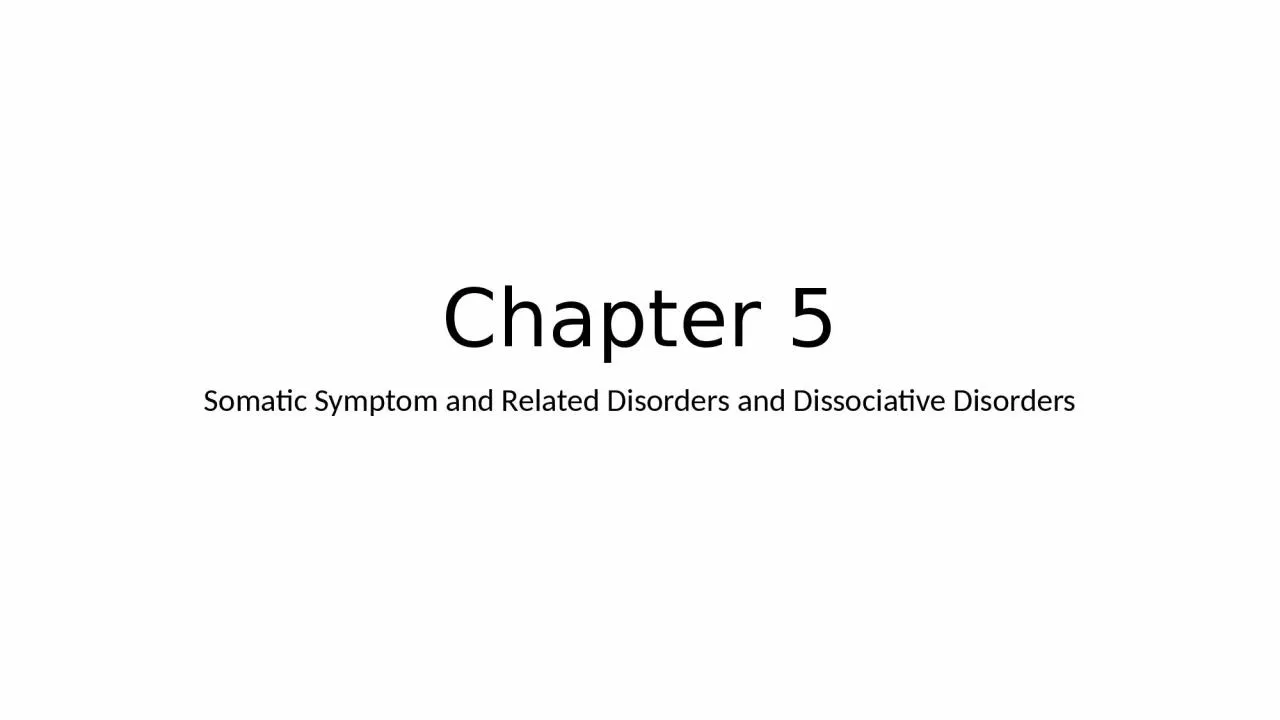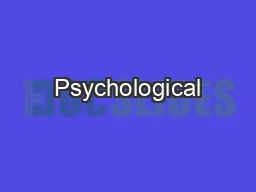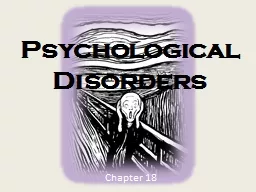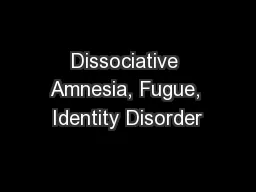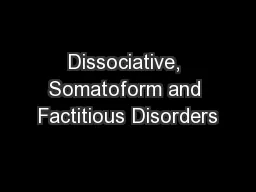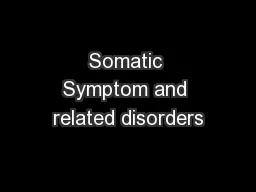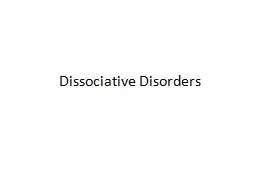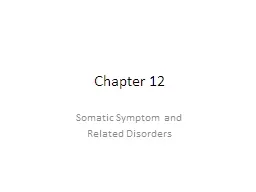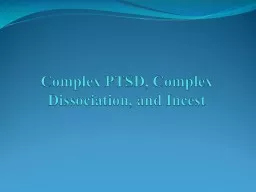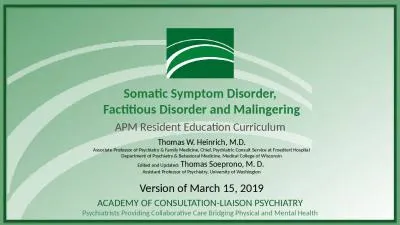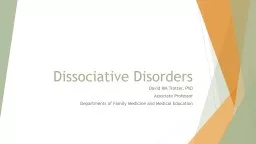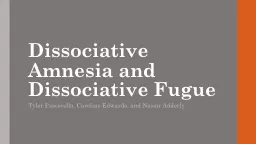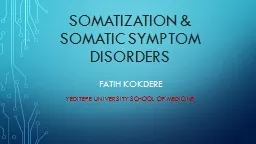PPT-Chapter 5 Somatic Symptom and Related Disorders and Dissociative Disorders
Author : unita | Published Date : 2022-06-14
Somatic Symptom Disorder One or more somatic symptoms that are distressing or result in significant disruption of daily life Excessive thoughts feelings and behaviors
Presentation Embed Code
Download Presentation
Download Presentation The PPT/PDF document "Chapter 5 Somatic Symptom and Related Di..." is the property of its rightful owner. Permission is granted to download and print the materials on this website for personal, non-commercial use only, and to display it on your personal computer provided you do not modify the materials and that you retain all copyright notices contained in the materials. By downloading content from our website, you accept the terms of this agreement.
Chapter 5 Somatic Symptom and Related Disorders and Dissociative Disorders: Transcript
Download Rules Of Document
"Chapter 5 Somatic Symptom and Related Disorders and Dissociative Disorders"The content belongs to its owner. You may download and print it for personal use, without modification, and keep all copyright notices. By downloading, you agree to these terms.
Related Documents

